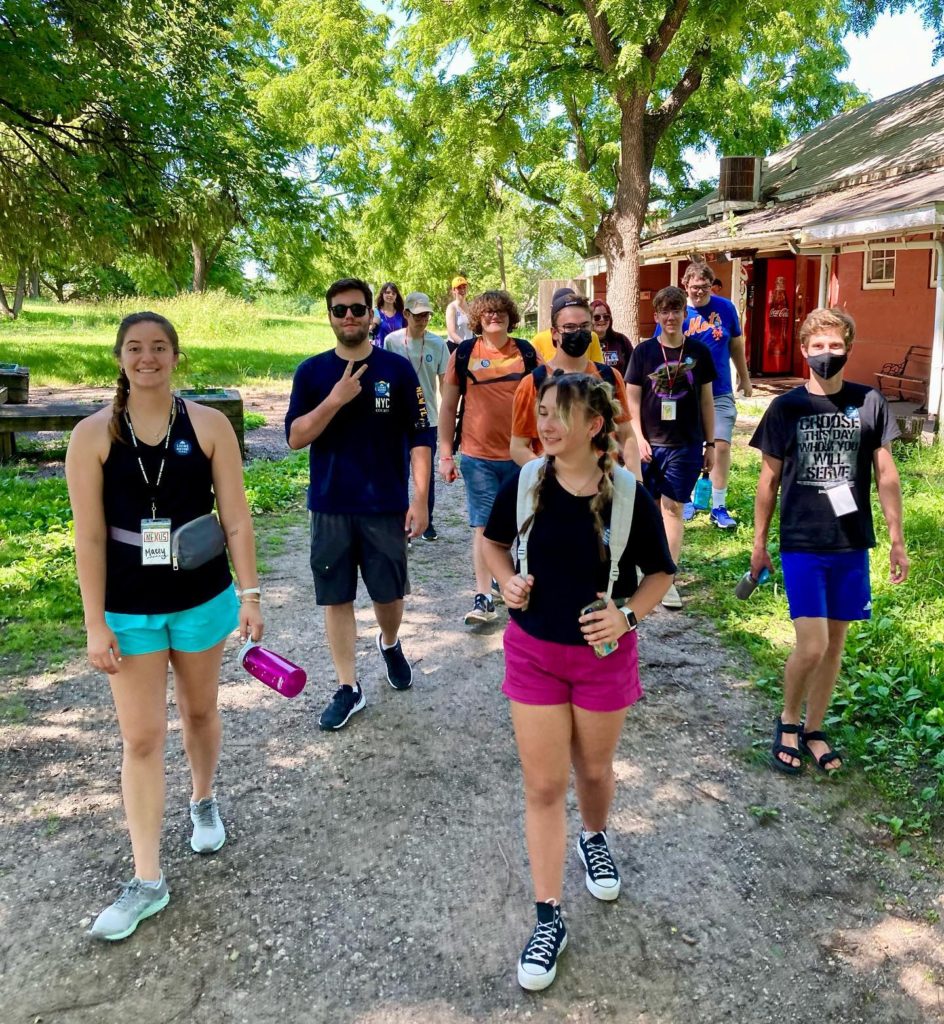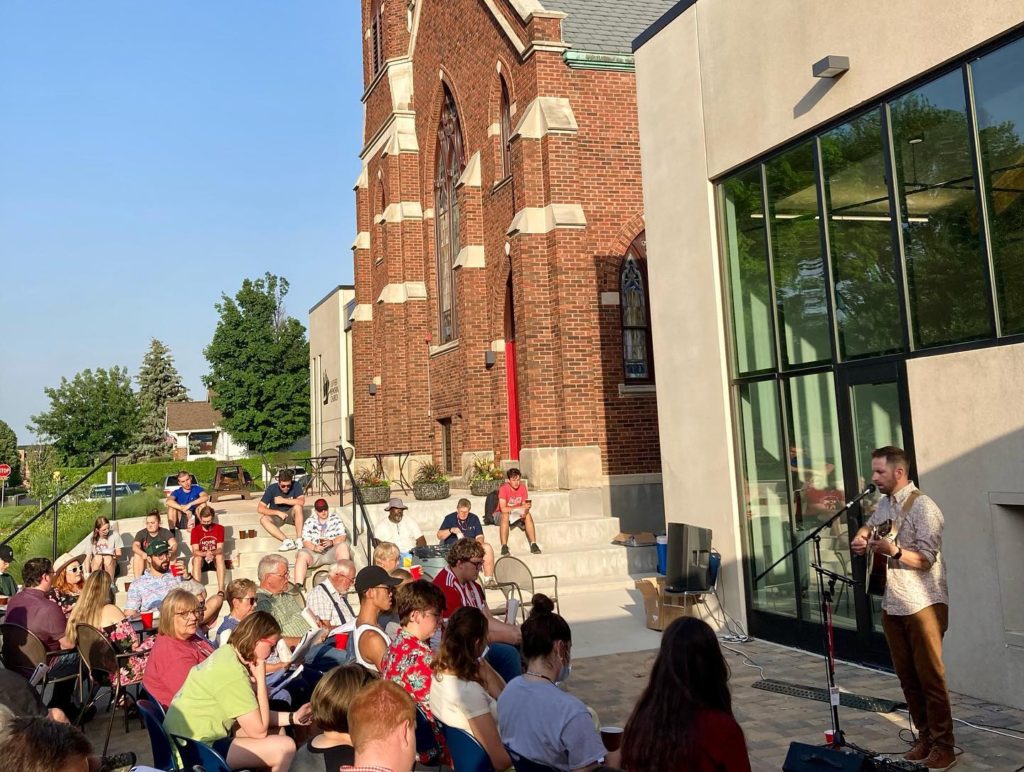A RESPONSE TO AND EVALUATION OF RECONCILING SCRIPTURE FOR LUTHERANS
Reconciling Scripture for Lutherans: Sexuality and Gender Identity is a booklet distributed by ReconcilingWorks to give a Biblical basis for affirming the LGBTQ+ lifestyle and for fully welcoming LGBTQ+ people into the life of the church, including as rostered leaders of the church. The booklet is divided into three parts. A short introduction discusses what the authors present as a Lutheran way of interpreting Scripture. The booklet then covers eight Bible passages, which it describes as the “clobber passages” that have been “used to exclude LGBTQ+ people from the body of Christ,” and eight passages which it claims “offer inclusive and expansive understandings of the nature of God’s welcome” (page 7).
In this article I will cover two things –
First, the way in which the clear and obvious meaning of Scripture is set aside in order to get Scripture to support the LGBTQ+ perspective.
Second, the way in which the booklet never adequately addresses the fact that whenever the Bible speaks of same-sex sexual behavior, it always speaks against it.
First, the setting aside of the clear and obvious meaning of Scripture in order to get Scripture to support the LGBTQ+ perspective.
The authors begin by praising Martin Luther for rejecting allegorical and metaphorical methods of interpretation, and instead insisting “that Scripture should not be interpreted to say more than what it meant to its original hearers, writers, and readers.” Our duty is to explore “what Scripture would have meant to its original hearers in its historical context” (page 10). And yet there are multiple times when the authors twist and/or stretch the plain and obvious meaning and message of the Bible in order to get the Bible to support their agenda.
The First of the Passages Used to Exclude is from Genesis 1, which clearly states that God created humanity male and female and then said to them, “Be fruitful and multiply, and fill the earth” (Genesis 1: 28). The traditional view of human sexuality is based upon the Biblical account of the creation of humanity as male and female. This view is supported by no less an authority than Jesus himself, who quoted this passage in Matthew 19: 4. Because God made humanity male and female, they were able to multiply and fill the earth.
And yet look at what the authors have done. They argue that just as there is not only land and sea, but also things in between such as swamps, estuaries, and reefs, and not just day and night, but also times in between such as dusk and dawn, so the Biblical account of creation could be interpreted as endorsing not just two sexes – male and female – but also a wide variety of gender identities (page 16). They also say, “We may read the description of human beings as male or female in this verse in the same way we read the description of God as Alpha and Omega – as a summary of every point along spectrum, rather than as two distinct boxes” (page 16).
But what does the Bible say? What is the clear meaning and message of Scripture? In Genesis 1: 27 it says, “Male and female he created them.” And then in the next verse, in verse 28, it says, “God blessed them, and God said to them, ‘Be fruitful and multiply.’” It is because humans are male and female that they are able to multiply. In Matthew 19: 4-5 Jesus said, “Have you not read that the one who made them at the beginning ‘made them male and female,’ and said, ‘For this reason a man shall leave his father and mother and be joined to his wife, and the two shall become one flesh’?” The words “for this reason” at the beginning of verse 5 mean that there is a connection between verse 4 and verse 5. It is because God made humans male and female that two people—one male and one female—are able to become one flesh. Any other interpretation—such as that the Bible is advocating for a wide variety and broad spectrum of sexual and gender identities—is reading in rather than listening to the plain, clear, and obvious message of Scripture.
The Second of the Passages Used to Exclude is from the second creation story found in Genesis 2. The authors state, “This coming together of Adam and Eve as man and woman has been used as a proof text in the argument against same-gender relationships.” The authors are correct when they say that Christians who hold to a traditional view believe that “true unity in relationships can only be achieved by male-female pairs whose differences complement each other, essentially making one whole out of two halves” (page 19).
What is odd is what the authors say in the next several sentences. They argue that the use of the language “one flesh” in both Genesis 2 and Matthew 19 recognizes a desired “sameness.” “If Adam was searching for a partner who had significant differences, or even complimentary (sic) differences, he might have chosen one of the animals whom God brought to him earlier in the chapter . . . . But rather than choosing something entirely different from himself, Adam speaks reverently about the similarities he and Eve share . . . . The characteristics that Adam was looking for in a mate had more to do with similarity and the ability to share life with someone like himself than it had to do with making up for some kind of lack in either partner” (page 19).
It is because of their bias to find support for same-sex relationships that the authors allow for only two options—the sameness of Adam and Eve, and the great differences between Adam and one of the animals. They do not allow for a third possibility—the similarities and differences, or what could be called the complementary differences, of male and female, which are able to become one flesh, and which are then able to multiply and fill the earth.
The authors also ignore the clear and obvious way in which the Biblical text connects verse 23 of Genesis 2, which speaks of the creation of two sexes, male and female, with verse 24, which speaks of two becoming one flesh. Verse 24 begins with the words “therefore” or “for this reason.” It is because male and female are two separate sexes (verse 23) that they are able to become one flesh (verse 24).
The Third of the Passages Used to Exclude is Genesis 19. I believe that the authors have made a clear and compelling case that homosexual behavior is not the sole reason for the destruction of Sodom and Gomorrah. Rather the Scriptures are very clear that many other sinful behaviors also are the issue, including pride, greed, and uncharity (page 23). Those who wish to build a case that the Bible consistently rejects same-sex sexual behavior need to refer also to other passages of Scripture and not just the story of Sodom and Gomorrah in Genesis 19.
The Fourth of the Passages Used to Exclude – from Leviticus 18 and 20 – I will deal with these in the second part of this article.
The Fifth of the Passages Used to Exclude is Deuteronomy 22: 5, “A woman shall not wear a man’s apparel, nor shall a man put on a woman’s garment.” The authors give two reasons why this verse should not be used as an argument against cross dressing. First, they say that some scholars believe that wearing the clothing of another gender was a common part of the cultic rituals for many of the civilizations surrounding Israel. Therefore, this prohibition essentially added another layer of protection against any kind of worship of other gods (page 27). I do not know enough about the worship life of the nations surrounding Israel at that time to be able to comment on this first argument. However, there is a major flaw in their second argument. The authors refer to the writings of a Jewish rabbi who suggested that the words used for “a man’s apparel” actually refer to armor and weapons. In an effort to minimize the loss of women who would be capable of childbearing, women were not to dress as men and go into battle (pages 27-28). The problem with that interpretation is that the verse not only forbids women to dress as men, it also tells men not to dress as women.
The Sixth of the Passages Used to Exclude is Deuteronomy 23: 1 – “No one whose testicles are crushed or whose penis is cut off shall be admitted to the assembly of the Lord.” Along with the authors I feel compassion for a man who has been forcibly castrated—either as a form of punishment (page 29) or in order to make him into a eunuch so that he would be able to care for the king’s wives or to watch over the royal treasury (page 30). I can understand the point of the authors that maybe this verse was included in order to keep “the Hebrew people from using castration as a punishment because it would essentially disconnect the offender from society as a whole, which, in that time and place, would have been almost as effective as a death sentence” (pages 29-30). I give thanks for the later inclusion of those who had been forcibly castrated in exile (see my consideration of the Third of the Passages Used to Welcome – Isaiah 56), and I give thanks that Philip reached out to and baptized the Ethiopian eunuch (see my consideration of the Fifth of the Passages Used to Welcome – Acts 8). But, as I will say in my consideration of those two passages, they do not give Biblical support for transgenderism as a sex change process which is intentionally and voluntarily chosen.
The Seventh and Eighth of the Passages Used to Exclude – from Romans 1, 1 Corinthians 6, and 1 Timothy 1 – I will deal with these in the second part of this article.
It should be clear and obvious that in their consideration of the Passages Used to Exclude the authors are not taking seriously the clear and obvious meaning of a text, but instead are using a text for their own pre-determined purposes in order to find Biblical support for the LGBTQ+ agenda. The same is also true of the Passages Used to Welcome.
The First of the Passages Used to Welcome is the book of Ruth. The authors are absolutely correct when they say that “Ruth shows great loyalty to Naomi, both in word and in action, and for it she is rewarded with a husband and a place among the chosen people of Israel” (page 42). The authors say it so well in their claim that “Ruth’s story gives us some of the most beautiful commitment poetry in the Bible” (page 42). The fact that Ruth, a foreigner, became a “part of the chosen people of Israel and a member of the lineage of Christ” (page 42) does show that “God works through outsiders to continue to bring the whole world to restoration and reconciliation” (pages 42-43). But there is no way that one can legitimately argue that the book of Ruth is intended to support the LGBTQ+ agenda and the concept of same-sex sexual behavior. The only sexual relationships mentioned in the book of Ruth are opposite-sex sexual relationships—between Elimelech and Naomi, their two sons Mahlon and Chilion and their Moabite wives Orpah and Ruth, and Ruth and Boaz. In trying to get this story to support the LGBTQ+ agenda and same-sex sexual behavior the authors have violated the method of interpretation which they have praised Martin Luther for—not trying to get Scripture to say “more than what it meant to its original hearers, writers, and readers” (page 10).
As part of their discussion of this First of the Passages Used to Welcome, the authors also mention Jesus’ actively reaching out to people on the edges of society, including Samaritans and tax collectors (page 42). But again, there is no way that one could argue that in taking these actions Jesus was advocating for the LGBTQ+ agenda and same-sex sexual behavior. In the same way, I do not believe that Jesus was advocating for same-sex sexual behavior in Luke 4 when he spoke of how Elijah was sent to the widow at Zarephath in Sidon and how during the time of the prophet Elisha, only Naaman the Syrian was cleansed of his leprosy. The authors are violating the integrity of Scripture by trying to get Scripture to say something far different from what it meant to the original hearers, writers, and readers.
The Second of the Passages Used to Welcome is Psalm 139. The authors quote verses 13 and 14: “For it was you who formed my inward parts; you knit me together in my mother’s womb. I praise you, for I am fearfully and wonderfully made.” These verses remind me of Jeremiah 1: 5, where God said to the prophet, “Before I formed you in the womb I knew you, and before you were born I consecrated you.”
The authors are absolutely right when they say that the verses from Psalm 139 show that “God already knows us completely, and loves us unconditionally” (page 44). They are also correct when they say that we “learn and grow and continue to change throughout our entire lives” (page 45). They are accurate in their statement that “sometimes we require or choose to do things that help make us more whole and more healthy, like getting fitted for glasses, or taking medication for depression, or having our appendix out” (page 45). So far I would agree with them. But then they go on to say that “for transgender people, these changes may include things like name and pronoun changes, hormone therapy, or gender-confirmation surgery” (page 45). They are speaking as if gender-confirmation or gender-reassignment surgery was no more than getting fitted for glasses or having your appendix taken out.
What the trans-affirming community is saying is that the “real” self is the self with the new name and the new gender identity. According to the trans-affirming community, as God was forming my inward parts and knitting me together in my mother’s womb, God knew that the name I would be given at my birth would not be my real name and the gender with which I would be born would not be my real gender. There is a total lack of Biblical support for the idea that my “real” self (which is also known to God) is something other than what God formed me in my mother’s womb to be. Psalm 139 does not support what the trans-affirming community is trying to get it to support.
I will consider together the Third and Fifth of the Passages Used to Welcome. The Fifth of the Passages Used to Welcome is the story in Acts 8 of Philip and the Ethiopian eunuch. Along with the authors I grieve over the thought that this person who was seeking to be in relationship with God might not have been allowed into the temple in Jerusalem. Along with the authors I rejoice that a follower of Jesus (Philip) realized “the real-life implications of a Gospel that is meant for all people” (page 54). The Ethiopian eunuch was asking, “Can my being a eunuch and an ethnic and racial outsider keep me from being baptized?” Along with the authors I am glad that Philip answered with a resounding, “Of course not.” But the baptism and inclusion of someone who was probably forcibly castrated does not provide Biblical support for voluntarily choosing gender-confirmation or gender-reassignment surgery.
The same thing is true of the Third of the Passages Used to Welcome – Isaiah 56, which embraces those who had been forcibly castrated in exile. This passage also does not provide Biblical support for a sex change process which is intentionally and voluntarily chosen.
The Fourth of the Passages Used to Welcome is from Matthew 22. Jesus is asked, “Which commandment in the law is the greatest?” He replies, “‘You shall love the Lord your God with all your heart, and with all your soul, and with all your mind, and with all your strength.’ And the second is like it: ‘You shall love your neighbor as yourself’” (Matthew 22: 37-39, Mark 12: 30-31). The authors ask whether the prohibitions in Leviticus 18 and 20 against sex with animals, sex with “a man as with a woman,” and sex during a woman’s menstrual cycle show love (verse 51). Their answer is that the ancient Israelites were like other ancient cultures in believing that the amount of semen was limited. Sex with animals, same-gender sexual activity between men, and sex during a woman’s menstrual cycle would have “wasted” an opportunity to have a child. “Depriving a wife of children . . . would not have been an act of love” (page 51). However, the Bible does not base its prohibition against sex with animals and same-sex sexual behavior between men upon a limited amount of semen. Rather it is based upon creation. The one whom Adam was to become one flesh with was the one concerning whom Adam said, “This at last is bone of my bones and flesh of my flesh” (Genesis 2: 23). The one whom Adam was to become one flesh with was not one of the animals, from which he was very different, but a human, with whom he shared both similarities and differences—a human of the opposite sex.
The Sixth of the Passages Used to Welcome is the story of Peter and Cornelius, as found in Acts 10 and 11. Along with the authors, I am struck with how difficult it must have been for Peter to go to Cornelius’ house. I am glad that Peter paid attention to what the Spirit was doing, even when the Spirit was doing some “scary and life-changing things” (page 56). But there is a basic problem in claiming that the Gentile outreach of the early church supports the LGBTQ+ agenda and same-sex sexual behavior. Outreach beyond the Jewish community was fully in line with the words of Jesus to the disciples in Acts 1: 8 – “You will be my witnesses in . . . Samaria and to the ends of the earth.” And in the New Testament there is a clear change in attitude towards the Old Testament dietary laws. “The law was our disciplinarian until Christ came.” (Galatians 3: 24) But there is no way that there is a similar change in attitude in the New Testament towards same-sex sexual behavior. Rather, as we will see in the second main section of this paper, every time the Bible speaks about same-sex sexual behavior, it speaks against it.
One wonders why—with their prime method of interpretation being a hermeneutic of inclusion rather than what the passage meant to its original readers, writers, and hearers—the authors did not include the Jerusalem conference in Acts 15 as one of the passages used to welcome. If some of the other passages which they use are supposed to support same-sex sexual behavior, then why could we not say that the decision to include Gentiles within the church without their first having to become Jews also supports same-sex sexual behavior?
The Seventh of the Passages Used to Welcome is 1 Corinthians 12, where the apostle Paul describes the church as being like a body. I agree with the authors that Paul is saying that every part of the body is important, and that when one part of the body is hurting, the whole body is hurting. The problem is that the authors then use these statements to build their case in favor of the LGBTQ+ agenda and same-sex sexual behavior.
Certainly, every part of the body is important. Certainly, the pain felt by anyone needs to affect everyone. As people who have experienced the love of Christ, we need to feel compassion for all people, regardless of their sexuality and gender identity. We need to speak the truth in love, but we need to speak the truth. How can we use this part of one of Paul’s letters to argue in favor of something that Paul so clearly writes against in other parts of his letters? Again, the authors are violating their own principle of interpretation by trying to get a passage of Scripture to say something very different from what it was meant to say by its original writer to its original hearers and readers.
Having covered several examples of the amazing way in which the authors set aside the clear and obvious meaning of Scripture in order to get Scripture to support the LGBTQ+ perspective, I will now turn to the second main section of this article –
The way in which the booklet never adequately addresses the fact that whenever the Bible speaks about same-sex sexual behavior, it always speaks against it.
Here I will address the Fourth, Seventh, and Eighth of the Passages Used to Exclude. All of these passages are very clear in their rejection of same-sex sexual behavior. The authors of Reconciling Scripture are never able to develop a convincing argument to dismiss, discredit, reinterpret, or explain away this rejection. One of the things that for me is amazing about their treatment of the Fourth Passage is that they do not even really try.
The Fourth of the Passages Used to Exclude is from Leviticus 18 and 20. Leviticus 18: 22 clearly says, “You shall not lie with a male as with a woman.” This prohibition is then repeated in Leviticus 20: 13. (Please note that I have corrected the typo in the booklet, which has “like” rather than “lie” in its quotation of both verses.)
What could be clearer than that? And yet the authors never really deal with that very clear prohibition. Nor do they come up with a convincing argument to explain it away. Instead they state that “Jesus’ relationship with the Mosaic law is complex” (page 25).
They are correct when they say that Jesus made some of the commandments even more demanding (as in the Sermon on the Mount), on several occasions did not observe the sabbath commandment, and saved a woman who had been caught in adultery from being stoned. But Jesus never arbitrarily violated the letter of the moral law merely by stating that that prohibition was not valid anymore. When he acted contrary to the sabbath commandment, he always had a specific, life preserving purpose for doing so. Also, as in the time when he defended the disciples, who were being criticized for plucking some heads of grain, rubbing them in their hands, and eating them on the sabbath, Jesus cited Biblical precedent. He told of how David and his companions ate the Bread of the Presence, “which it is not lawful for any but the priests to eat” (Luke 6: 4). Unlike Jesus, the authors are not able to and do not provide any Biblical precedent for their rejecting the prohibitions against same-sex behavior in Leviticus 18 and 20.
In the same way there is no way that you could say that Jesus’ challenging the crowd, refusing to condemn the woman, and sending her on her way (page 26) is an adequate argument for rejecting the very clear prohibitions in Leviticus 18 and 20. In Jesus’ saying, “Go and sin no more” (John 8:11), he was saying that the woman—as well as the man with whom she had been committing adultery—had both been sinning.
I would certainly agree with the authors that the Bible does not support modern-day violence against men who have sex with other men (page 26). It certainly also does not support modern-day violence against women who have sex with other women, men and women with gender dysphoria, and so on. But I would also want to say that the authors have done nothing to counter the clear prohibitions against same-sex sexual behavior in Leviticus.
Nor have they done an adequate job at explaining away the clear statements from Paul against same-sex sexual behavior in the Seventh of the Passages Used to Exclude – from Romans 1. In Romans 1: 26-27 Paul says, “Their women exchanged natural intercourse for unnatural, and in the same way also the men, giving up natural intercourse with women, were consumed with passion for one another.”
Unlike the way in which the authors really did not deal with the Fourth Passage (from Leviticus), at least they try to find a way to explain away the clear meaning of the Seventh Passage. First, they try to discredit the Seventh Passage by saying that “Paul, like every other writer of his time, did not have a concept of ‘sexual orientation’ as we have today” (page 32). Therefore, they would argue, Paul did not understand that for some people it feels “natural” to be sexually attracted to someone of the same sex. But here Paul is not talking about what feels natural to me. Rather, starting with verse 20, he is talking about creation. He is talking about the natural orders of creation—the fact that God created humanity male and female. And besides, just because certain desires and attractions feel natural to me, that does not mean that they are right. It would be a very scary approach to ethics to say that if it feels natural or desirable to me, then it must be acceptable. One would never want to say that, if it feels natural or desirable to engage in pedophilia, rape, or adultery, then it must be OK.
Second, the authors argue that Paul is not speaking against same-sex sexual behavior per se, but same-sex sexual behavior within the context of idol worship. Again, that kind of interpretation has to be read in. It is not what the passage says. It is not the conclusion that a person would come to through what the authors call “the Plain Reading of Scripture.”
And then there is another line of argument that has been used by others against a traditional interpretation of this passage, which the authors of this booklet do not use. Some say that Paul is not talking here about loving, committed, consensual, same-sex sexual behavior between two adults, but instead is speaking against abusive, same-sex sexual behavior, such as between an adult and a child. The problem with that interpretation is the clear consensual language that Paul is using. “The men . . . were consumed with passion for one another” (verse 27).
The Eighth of the Passages Used to Exclude are 1 Corinthians 6:9 and 1 Timothy 1:10. These two verses make use of two words in Greek which are the issue here – malakoi, which literally means “soft ones” (page 35), and arsenokoitai, which is a combination of the words “male” and “bed” (page 36) – men who take other men to bed. The Greek word malakoi has been interpreted to refer to men who take the passive role in a same sex sexual relationship, i.e., who allow themselves to be penetrated.
The authors are among those who try to build a case in favor of same-sex sexual behavior by arguing that what the Bible is speaking against is abusive, same-sex sexual behavior—same-sex sexual behavior where there is an imbalance of power—not against loving, committed, consensual, same-sex sexual behavior. Therefore, they make such statements as the following. In the culture in which Paul was writing, “same-gender sexual activity existed, but long-term, monogamous, same-gender romantic relationships did not . . . . Paul wanted to reaffirm the boundaries of marriage. Although there was same-gender love in Greek and Roman cultures, it was not understood as a long-term relationship or one that could lead to marital fidelity and family” (pages 36-37).
But again, that is not the clear meaning of what is being said. Paul is not saying that it is OKto be among the malakoi and arsenokoitai as long as you are involved in loving, committed, consensual, same-sex sexual behavior, but it is not OK if you are involved in abusive, imbalance-of-power, same-sex sexual behavior. Rather he is speaking against all same-sex, sexual behavior. And the fact that in these passages Paul speaks against a number of other kinds of behavior does not eliminate the fact that he speaks against the malakoi and arsenokoitai.
The Eighth of the Passages Used to Welcome is Galatians 3. The authors begin that section by saying that Paul’s letter to the Galatians “was meant to help a community of diverse people understand how they might worship God together” (verse 59). Therefore, “in an attempt to bring the diverse Galatians together, Paul points them toward the one thing they all share—an identity in Christ” (page 59).
I was relieved that the authors did not try to argue for the elimination of sexual differences based upon Paul’s statement in Galatians 3: 28 that “there is no longer male and female.” I have known people who have made that kind of argument. Rather Paul’s point is that in terms of salvation there is no one group that has a special “in” over other groups. Paul’s main purpose in writing to the Galatians was not “to help a community of diverse people understand how they might worship God together.” Rather it was to counter false teachers and to bring the people back to an understanding that “a person is justified not by the works of the law but through faith in Jesus Christ” (Galatians 2: 16).
The authors are right that there is an “inclusive arc that runs throughout scripture . . . beginning in the earliest history of the Hebrew people—set apart from all others with a Law to govern that separation—to the calling in of one outsider after another from Ruth, to the foreigners and the eunuchs of Isaiah, to the tax collectors and Samaritans of the Gospel, to Cornelius the Gentile centurion” (page 60). But the prohibition against same-sex sexual behavior remains throughout Scripture. It is not just part of the Law that governed Israel’s separation in the early days of their existence as a people. Rather it is based upon the creation of humanity as male and female, and it stands throughout the Bible.
The authors end the booklet by advocating for “an acceptance of differences in sexuality and gender identity” (page 60). It should be clear from a reading of this article that the authors are advocating for something that the Bible consistently does not approve.
The authors end by advocating for “a welcome for all” (page 60). The issue is not “a welcome for all.” Jesus told Nicodemus in what has been called the Gospel in a nutshell—the most famous verse in the Bible—“God so loved the world that he gave his only Son, so that everyone who believes in him may not perish but may have eternal life” (John 3: 16). Jesus’ use of the word “everyone” is a “welcome for all” to believe in him and have eternal life.
The issue is not whether there is “a welcome for all.” Rather the issue is what kind of behavior does the Bible accept and what kind does it not accept. It is absolutely essential that those who hold to traditional views of human sexuality address the matter of LGBTQ+ concerns with compassion. We need to stand firm on what the Bible says, but, as the apostle Paul wrote to the Ephesians, we need to speak the truth in love (Ephesians 4: 15).























